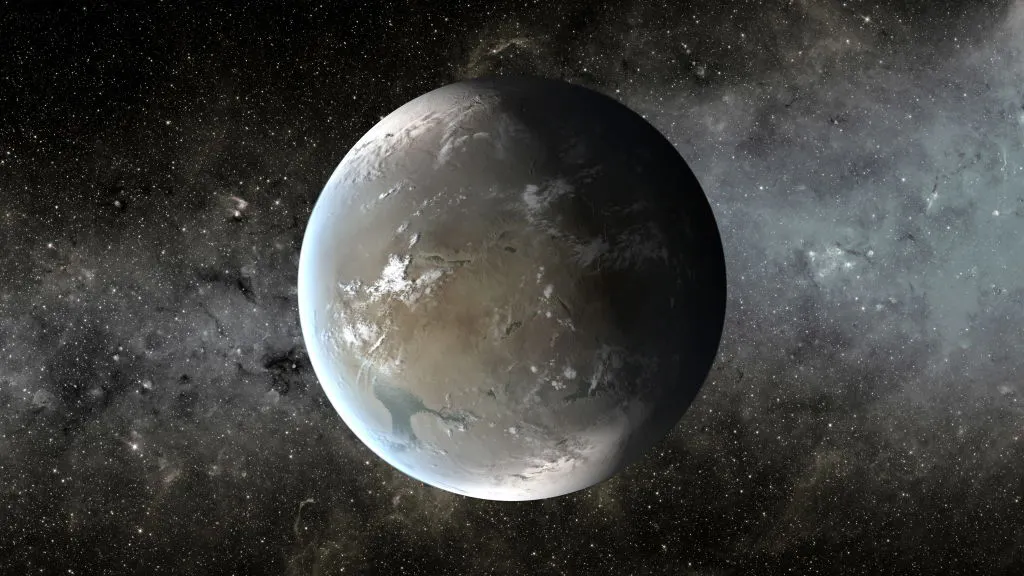For the first time, scientists searching for extraterrestrial life have found an exoplanet (a planet outside our solar system) that has water. Two new studies found that K2-18 b, which lies 110 light-years from Earth and orbits a red dwarf star, has water vapor and possibly even liquid water clouds, as Space.com reports.
Space.com notes, “Previously, scientists have discovered gas giants that have water vapor in their atmospheres, but this is the least massive planet ever to have water vapor detected in its atmosphere. This new paper even goes so far as to suggest that the planet hosts clouds that rain liquid water.”
Angelos Tsiaras of University College London’s Centre for Space Exochemistry Data (CSED), the leader of one of the research teams, stated, “This is the only planet right now with the correct temperature [for Earth-like life] and water outside the solar system. He added, “It is definitely not a second Earth … The only question that we’re trying to ask here, and we’re pushing forward, is the question of habitability. This is the planet that satisfies more [habitability] requirements than any other that we know right now.”
The lead author of the other study, Björn Benneke, a professor at the Institute for Research on Exoplanets at the Université de Montréal, told Space.com, “The water vapor detection was quite clear to us relatively early on. That’s in some ways the ‘holy grail’ of studying extrasolar planets … evidence of liquid water.”
As Space.com noted, “Because this study has found evidence for liquid water and hydrogen in this exoplanet’s atmosphere and it lies within the habitable zone, there is a possibility that this world is habitable.”
Benneke stated that although water exists in liquid water clouds on K2-18 b, the rain falls through thick gas before it hits the surface, heating it so it becomes gas before it reaches the planet’s surface. Landing on the planet would be impossible because the thick gas and the high pressure in the atmosphere would crush a spacecraft.
The Daily Mail noted, “It’s closer to its star than the Earth is to the Sun, meaning it has shorter years, and completing its orbit in 33 days while ours takes 365.”
Astrobiology.com quoted the Benneke team stating, “Results from the Kepler mission indicate that the occurrence rate of habitable-zone Earths and super-Earths may be as high as 5-20%. Despite this abundance, probing the conditions and atmospheric properties on any of these habitable-zone planets is extremely difficult and has remained elusive to date … With a 33 day orbit around a cool M3 dwarf, K2-18b receives virtually the same amount of total radiation from its host star (1441±80 W/m2) as the Earth receives from the Sun (1370 W/m2), making it a good candidate to host liquid water clouds.”
Space.com reported, “This team plans to expand this research even further by studying K2-18 b with NASA’s James Webb Space Telescope, which is set to launch in 2021.” Benneke opined that the research scientists are conducting is aiming toward “being able to study real, true Earth-like planets … We are not quite there yet,” but “this is really exciting.”

.png)
.png)

